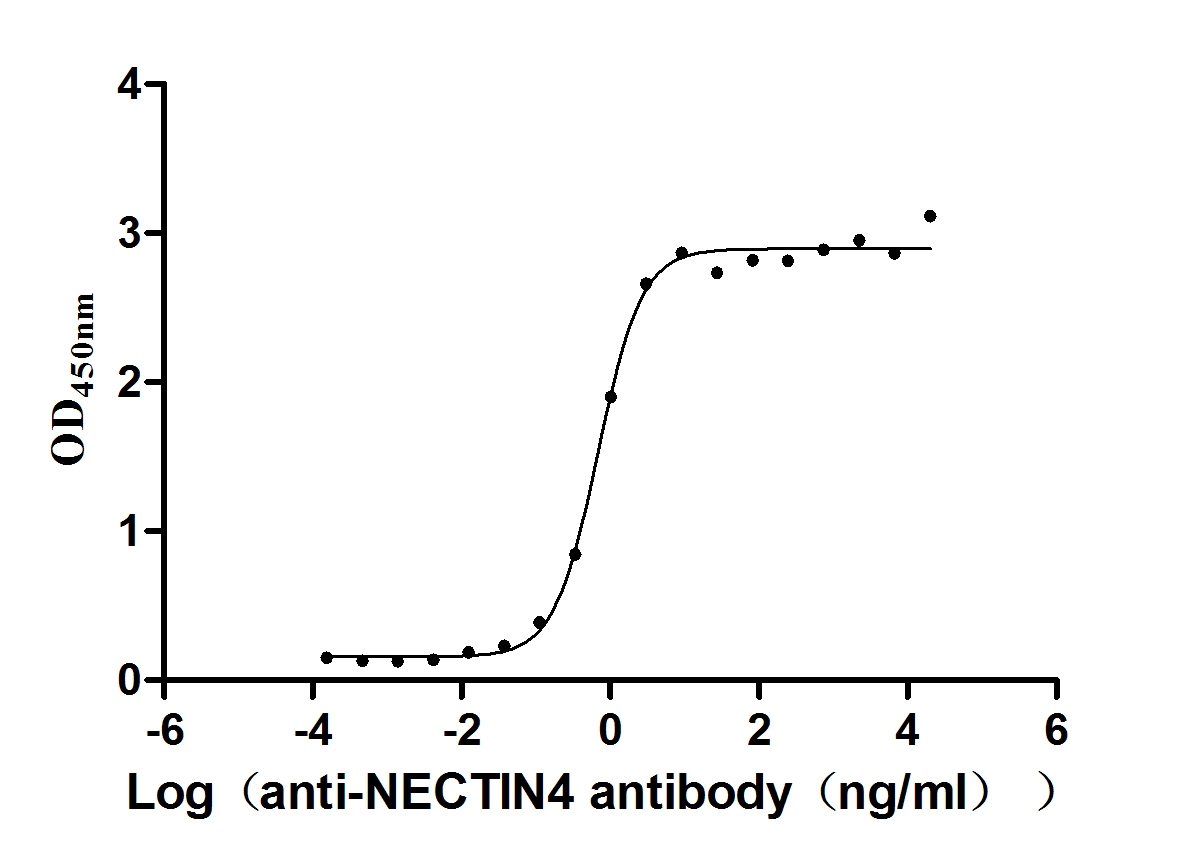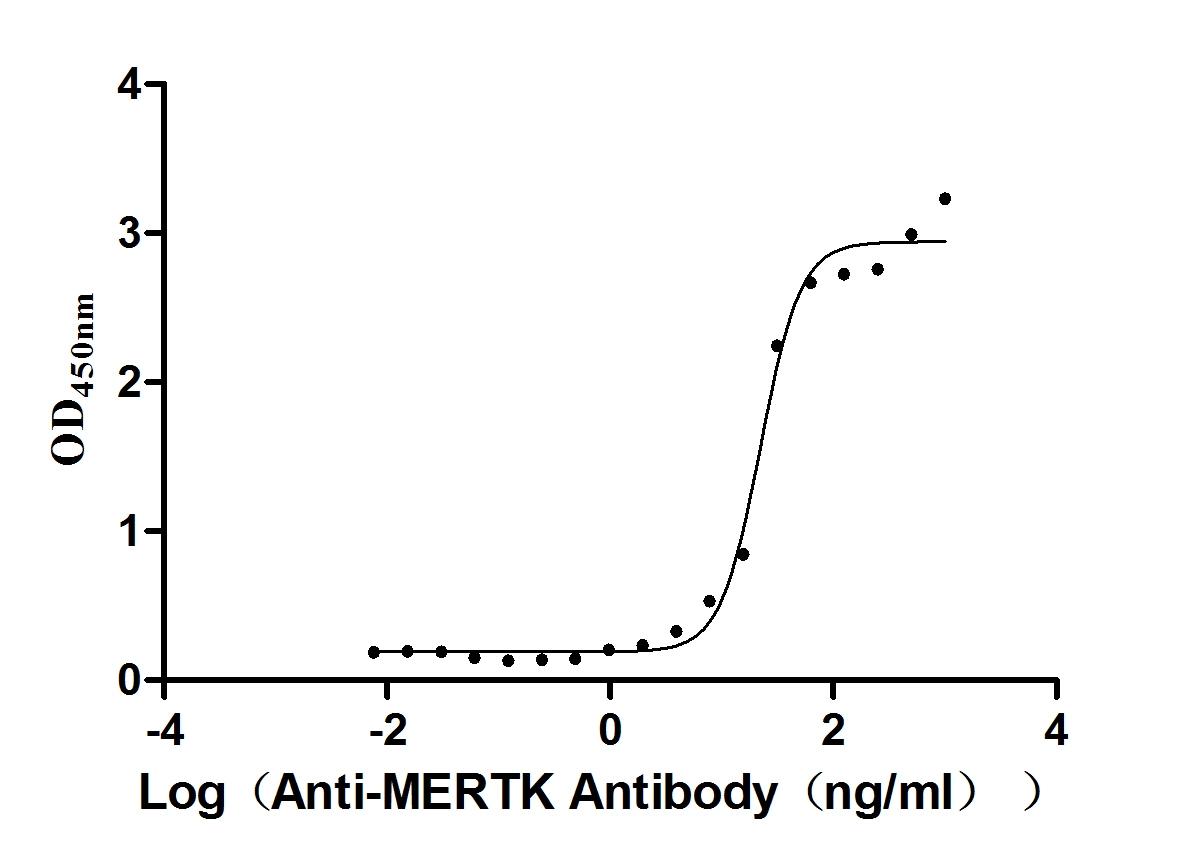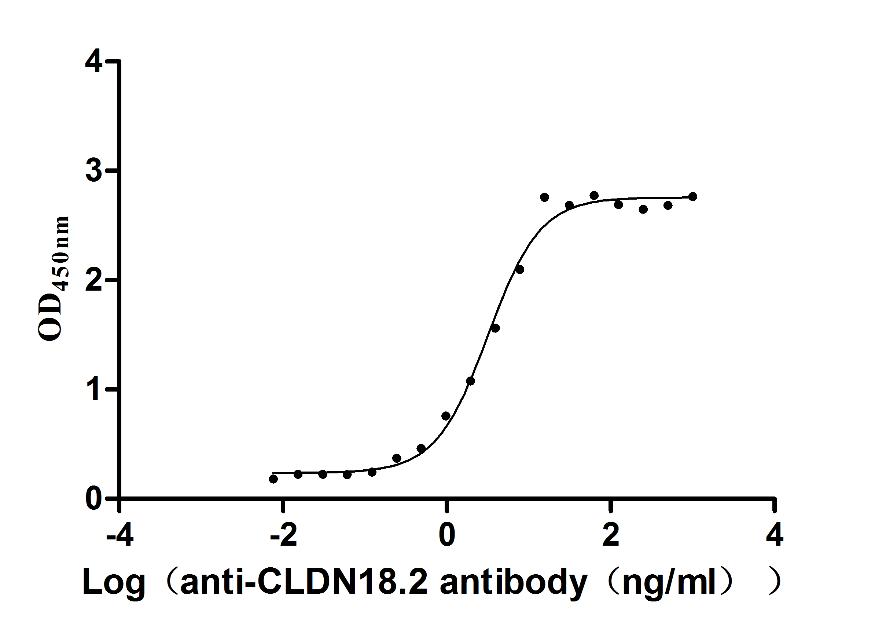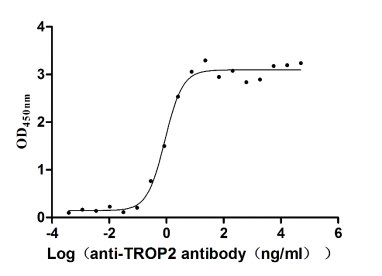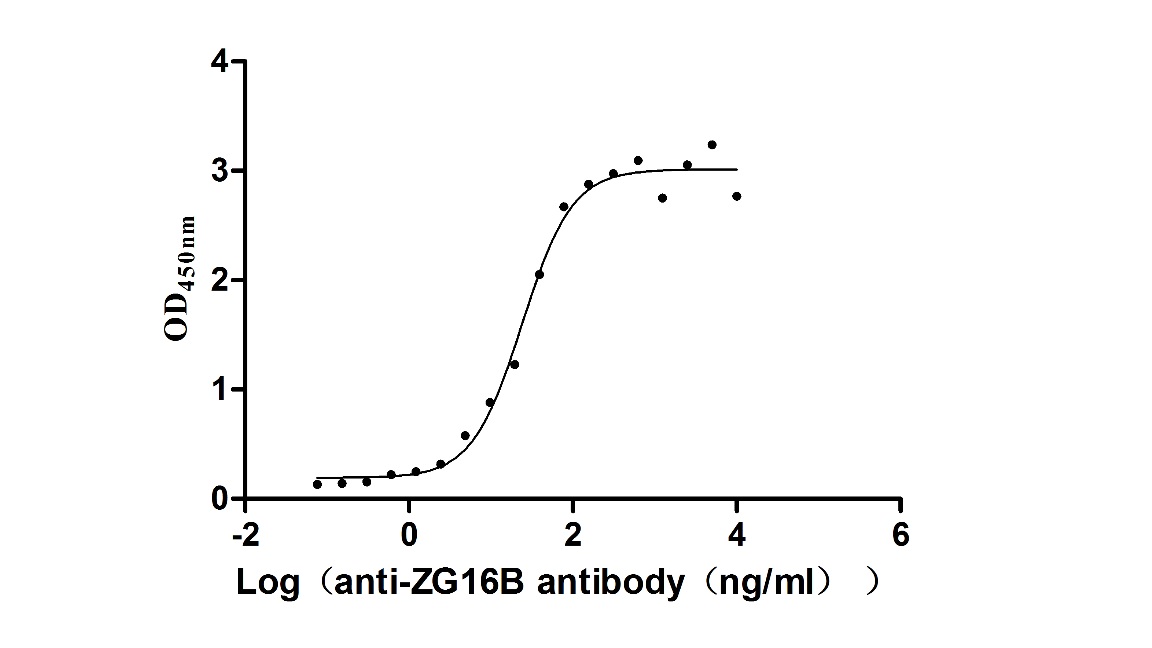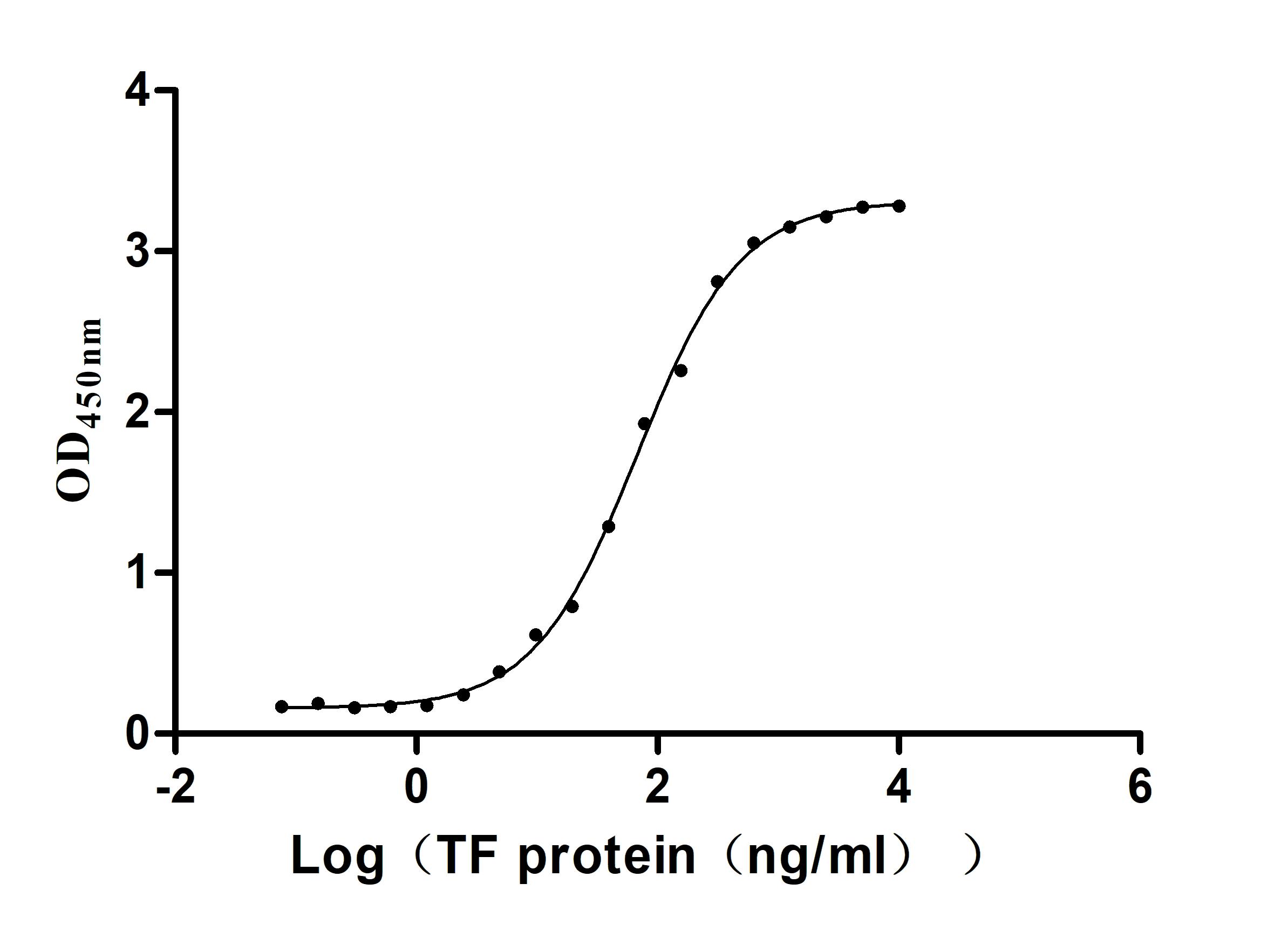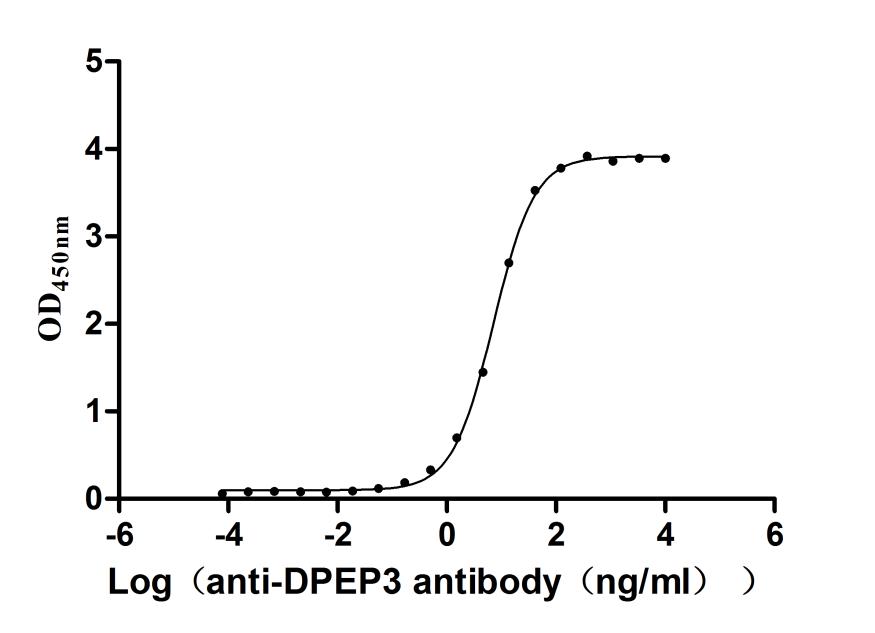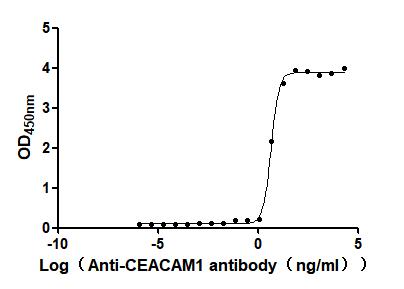Recombinant Human Serine/threonine-protein kinase D3 (PRKD3), partial
-
中文名称:人PRKD3重组蛋白
-
货号:CSB-YP018713HU
-
规格:
-
来源:Yeast
-
其他:
-
中文名称:人PRKD3重组蛋白
-
货号:CSB-EP018713HU
-
规格:
-
来源:E.coli
-
其他:
-
中文名称:人PRKD3重组蛋白
-
货号:CSB-EP018713HU-B
-
规格:
-
来源:E.coli
-
共轭:Avi-tag Biotinylated
E. coli biotin ligase (BirA) is highly specific in covalently attaching biotin to the 15 amino acid AviTag peptide. This recombinant protein was biotinylated in vivo by AviTag-BirA technology, which method is BriA catalyzes amide linkage between the biotin and the specific lysine of the AviTag.
-
其他:
-
中文名称:人PRKD3重组蛋白
-
货号:CSB-BP018713HU
-
规格:
-
来源:Baculovirus
-
其他:
-
中文名称:人PRKD3重组蛋白
-
货号:CSB-MP018713HU
-
规格:
-
来源:Mammalian cell
-
其他:
产品详情
-
纯度:>85% (SDS-PAGE)
-
基因名:
-
Uniprot No.:
-
别名:EPK 2; EPK2; KPCD3_HUMAN; nPKC nu; nPKC-nu; nPKCnu; nu; PKCnu; PKD 3; PKD3; PRK D3; PRKCN; PRKD 3; Prkd3; Protein kinase C; Protein kinase C nu; Protein kinase C nu type; Protein kinase D3; Protein kinase EPK 2; Protein kinase EPK2; Serine threonine protein kinase; Serine/threonine protein kinase D3; Serine/threonine-protein kinase D3
-
种属:Homo sapiens (Human)
-
蛋白长度:Partial
-
蛋白标签:Tag type will be determined during the manufacturing process.
The tag type will be determined during production process. If you have specified tag type, please tell us and we will develop the specified tag preferentially. -
产品提供形式:Lyophilized powder
Note: We will preferentially ship the format that we have in stock, however, if you have any special requirement for the format, please remark your requirement when placing the order, we will prepare according to your demand. -
复溶:We recommend that this vial be briefly centrifuged prior to opening to bring the contents to the bottom. Please reconstitute protein in deionized sterile water to a concentration of 0.1-1.0 mg/mL.We recommend to add 5-50% of glycerol (final concentration) and aliquot for long-term storage at -20℃/-80℃. Our default final concentration of glycerol is 50%. Customers could use it as reference.
-
储存条件:Store at -20°C/-80°C upon receipt, aliquoting is necessary for mutiple use. Avoid repeated freeze-thaw cycles.
-
保质期:The shelf life is related to many factors, storage state, buffer ingredients, storage temperature and the stability of the protein itself.
Generally, the shelf life of liquid form is 6 months at -20°C/-80°C. The shelf life of lyophilized form is 12 months at -20°C/-80°C. -
货期:Delivery time may differ from different purchasing way or location, please kindly consult your local distributors for specific delivery time.Note: All of our proteins are default shipped with normal blue ice packs, if you request to ship with dry ice, please communicate with us in advance and extra fees will be charged.
-
注意事项:Repeated freezing and thawing is not recommended. Store working aliquots at 4°C for up to one week.
-
Datasheet :Please contact us to get it.
相关产品
靶点详情
-
功能:Converts transient diacylglycerol (DAG) signals into prolonged physiological effects, downstream of PKC. Involved in resistance to oxidative stress.
-
基因功能参考文献:
- Our findings suggest that abnormal PKD3 expression might contribute to hepatocellular carcinoma progression. Furthermore, high PKD3 expression predicts a poor prognosis in hepatocellular carcinoma patients after hepatectomy PMID: 28363424
- The enriched pathway analysis reveals that PRKD3 regulates pathways contributing to multiple cancer related events, including cell cycle, migration and others. PMID: 28656000
- None of the Polymorphous low-grade adenocarcinoma (PLGA) lacking PRKD1 somatic mutations or PRKD gene family rearrangements harboured somatic mutations in the kinase domains of the PRKD2 or PRKD3 genes. PMID: 26426580
- This study discovered and characterized a novel, highly conserved N-terminal domain, comprising 92 amino acids, which mediates dimerization of Protein Kinase D (PKD) isoforms, PKD1, PKD2, and PKD3 monomers. PMID: 27662904
- Studies indicate that the loss of protein kinase D PKD1 is thought to promote invasion and metastasis, while PKD2 and upregulated PKD3 to be positive regulators of proliferation. PMID: 26253275
- Loss of PKD2 enhanced KC proliferative potential while loss of PKD3 resulted in a progressive proliferation defect, loss of clonogenicity and diminished tissue regenerative ability. PMID: 25802335
- for the first time, PKD3 is implicated in the transcription activation of latent HIV-1 provirus, and our results revealed a molecular mechanism of prostratin-induced HIV-1 transcription via PKCepsilon/PKD3/NF-kappaB signaling pathway. PMID: 25136641
- Activation of PKD2 and further increase of PKD3 activity leads to additional phosphorylation and inhibition of endogenous phosphatase slingshot 1L. PMID: 24840177
- PKD3 in TNBC cells provides a molecular connection between the Golgi and endolysosomal compartments to enhance proliferative mTORC1-S6K1 signaling. PMID: 24337579
- PKD3 negatively regulates human airway epithelial barrier formation and integrity through down-regulation of claudin-1, which is a key component of tight junctions. PMID: 24265314
- PKD3 may contribute to the malignant progression of prostate cancer cells through negative regulation of MMP-7 expression. PMID: 20813660
- PKD3 contributes to the proliferation and malignant growth of androgen-dependent prostate cancer cells in part by upregulating PSA expression. PMID: 20813663
- We have identified PKD2 and PKD3, especially PKD3, as novel cell growth regulators in HCC1806 triple-negative breast cancer cells PMID: 23393329
- PKD antagonists inhibited differentiation and viability of human hematopoietic stem cells, and had less HDAC phosphorylation, confirming the need for PKD-HDAC signaling in erythropoiesis. PMID: 22983445
- phosphorylation of GIT1 on serine 46 by PKD3 represents a molecular switch by which GIT1 localization, paxillin trafficking, and cellular protrusive activity are regulated. PMID: 22893698
- Data demonstrate the functional role of protein kinase D1 and protein kinase D3 in modulating physiological responses to Ox1R activation. PMID: 20621130
- Novel isoforms regulate human keratinocyte differentiation by activating a p38 delta mitogen-activated protein kinase cascade that targets CCAAT/enhancer-binding protein alpha. PMID: 12080077
- PKCnu is an important component of signaling pathways downstream from novel PKC enzymes after B-cell receptor engagement PMID: 12506120
- the effect of G protein-coupled receptor agonists on the regulatory properties, continuous shuttling, and intracellular distribution of Protein kinase C nu/protein kinase D3 PMID: 12676944
- specificity of different PKD isoforms in regulating protein trafficking from the trans-Golgi network PMID: 14743217
- PKD3 directly contributes to insulin-independent basal glucose uptake in L6 skeletal muscle cells. PMID: 15496505
- Expression of constitutively activated PKCeta caused Golgi fragmentation. PMID: 15824133
- the catalytic activity of PKD3 may regulate its nuclear import through autophosphorylation and/or interaction with another protein PMID: 16380377
- The vesicular distribution may be attributed in part to the direct interaction between PKD3 and vesicle-associated membrane protein VAMP2, through which PKD3 may regulate VAMP2 vesicle trafficking by facilitating its recruitment to the target membrane. PMID: 17196367
- A pathway comprising PKCs>Raf-1>MEK-1>ERK-1/-2 mediates the effect of gastrin on the CgA promoter, and strongly suggests that enhanced phosphorylation of Sp1 and CREB is crucial for CgA transactivation through the G protein-coupled CCK-B/gastrin receptor. PMID: 17889508
- The data suggest that protein kinase C contributes to the phosphorylation of influenza PB1 and NS1 proteins which appears to be functionally relevant for both viral RNA polymerase activity and efficient viral replication. PMID: 19264651
显示更多
收起更多
-
亚细胞定位:Cytoplasm. Membrane. Note=Translocation to the cell membrane is required for kinase activation.
-
蛋白家族:Protein kinase superfamily, CAMK Ser/Thr protein kinase family, PKD subfamily
-
组织特异性:Ubiquitous.
-
数据库链接:
Most popular with customers
-
Recombinant Human Nectin-4 (NECTIN4), partial (Active)
Express system: Mammalian cell
Species: Homo sapiens (Human)
-
Recombinant Mouse Tyrosine-protein kinase Mer (Mertk), partial (Active)
Express system: Mammalian cell
Species: Mus musculus (Mouse)
-
Recombinant Macaca fascicularis Claudin 18.2 (CLDN18.2)-VLPs (Active)
Express system: Mammalian cell
Species: Macaca fascicularis (Crab-eating macaque) (Cynomolgus monkey)
-
Recombinant Human Tumor-associated calcium signal transducer 2 (TACSTD2), partial (Active)
Express system: Mammalian cell
Species: Homo sapiens (Human)
-
Recombinant Macaca fascicularis zymogen granule protein 16 homolog B (ZG16B) (Active)
Express system: Mammalian cell
Species: Macaca fascicularis (Crab-eating macaque) (Cynomolgus monkey)
-
Recombinant Human Serotransferrin(TF) (Active)
Express system: Mammalian cell
Species: Homo sapiens (Human)
-
Recombinant Human Dipeptidase 3(DPEP3), partial (Active)
Express system: Mammalian cell
Species: Homo sapiens (Human)
-
Express system: Mammalian cell
Species: Homo sapiens (Human)


